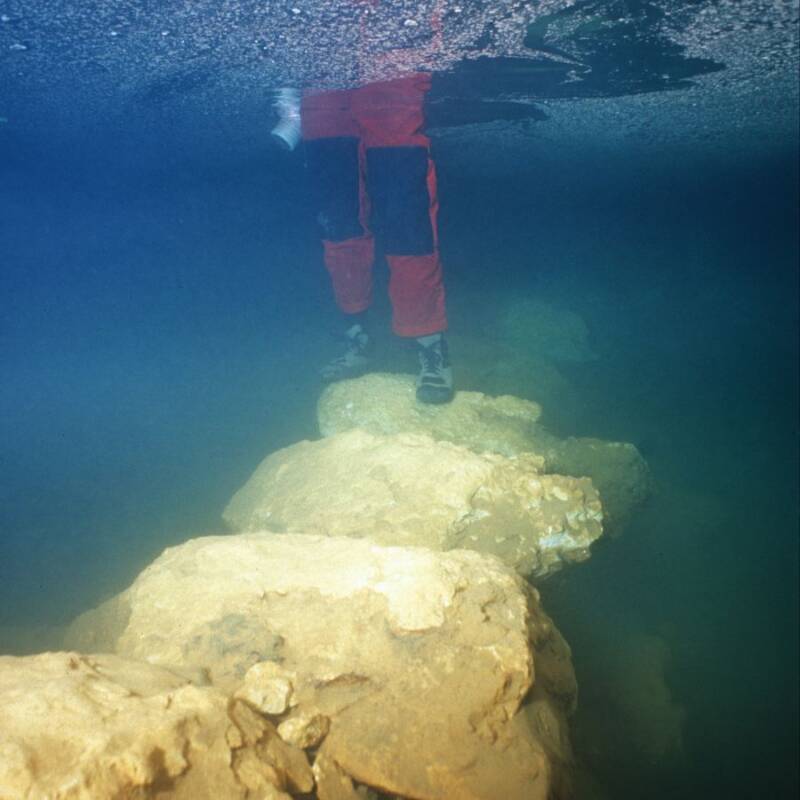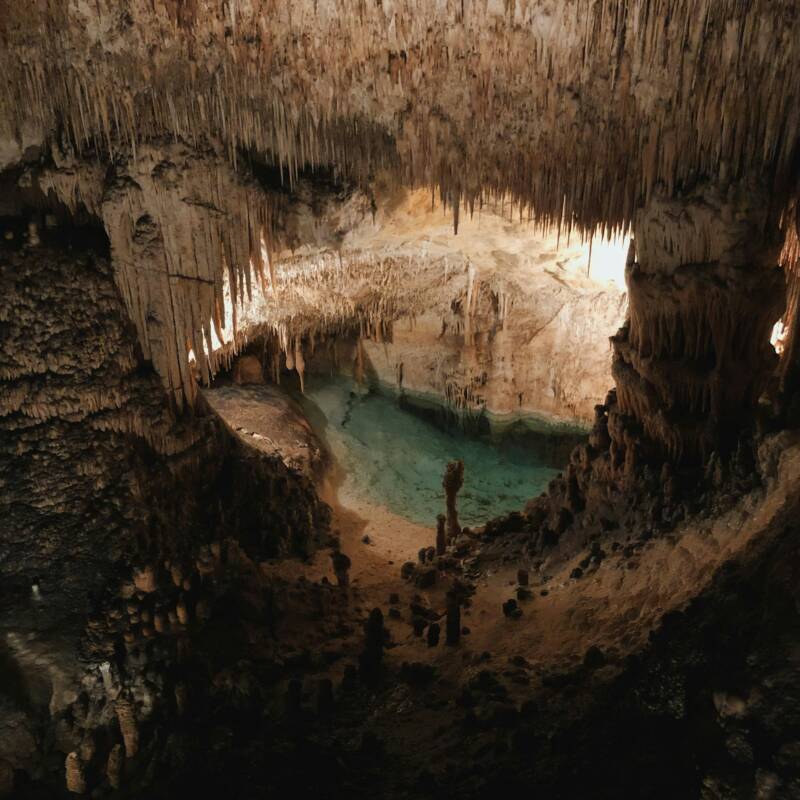New analysis of a submerged limestone bridge found in Genovesa Cave on the Mediterranean island of Mallorca suggests that humans settled on the island thousands of years before experts previously believed.

Robert LandrethA researcher stands on the limestone bridge, which is now submerged in the subterranean lake that it once spanned.
In 2000, scientists on the Spanish island of Mallorca discovered a man-made bridge submerged in Genovesa Cave. Researchers initially estimated that it dated back 3,500 years, but a new analysis has revealed that it’s much older than that.
Now, experts say that the bridge was likely constructed nearly 6,000 years ago. This pushes the timeline of human settlement on the island back more than 2,000 years — and changes everything we know about the history of Mallorca.
The Submerged Bridge In Genovesa Cave
For years, Genovesa Cave on the island of Mallorca has been at the center of research into the history of human migration in the Mediterranean. In 2000, scientists discovered a man-made bridge in the cave and estimated that it was 3,500 years old based on pottery found at the site.
The bridge measures 25 feet long and is made of large limestone blocks, some of which are more than four feet wide. Researchers aren’t sure how it was built, but it was put together without cement or mortar. The bridge seemingly provided a path from the cave’s entrance to an inner chamber that’s now also underwater.

B.P. OnacResearchers stand at the entrance of Genovesa Cave.
“The presence of this submerged bridge and other artifacts indicates a sophisticated level of activity, implying that early settlers recognized the cave’s water resources and strategically built infrastructure to navigate it,” said Bogdan Onac, a professor at the University of South Florida’s School of Geosciences and the lead author on the latest study about the bridge, according to CNN.
Over the years, scientists have also discovered the remains of an extinct goat species and additional pottery within Genovesa Cave. “This suggests that humans may have used the area near the cave entrance, a large collapse chamber, for living,” said Onac. “The purpose of crossing the lake to access that chamber remains unclear; it could have served as a refuge, place for rituals, or as a storage place, keeping food out of Mallorca’s hot days.”
However, the bridge remains one of the most fascinating aspects of the cave. And now, Onac’s most recent analysis of the structure has revealed that it’s much older than previously believed.
What Does The Bridge Reveal About Human Settlement In The Mediterranean?
Professor Onac and his colleagues decided to pursue non-traditional routes to pinpoint the likely age of the Genovesa Cave bridge. Instead of radiocarbon dating nearby pottery or animal remains, the team examined geological formations to piece together the cave’s history.
“It was only in the past four years that we finally gathered the data needed to address this longstanding research topic and better estimate the arrival time of humans in Mallorca,” Onac said.

Nathalie Buss/UnsplashMallorca’s caverns are one of its top tourist attractions, particularly the Drach Caves, which are located just a mile from Genovesa Cave.
According to the team’s study, which was just published in the journal Communications Earth & Environment, they examined discoloration on the cave’s walls caused by rising and falling sea levels. On the bridge itself, light-colored bands and mineral deposits allowed the scientists to track changing water levels throughout history.
By comparing data from the cave to data from historical sea level change, the team was able to determine that the bridge was constructed at least 5,600 years ago. This is much older than initial estimates, placing humans on Mallorca some 2,000 years before previously believed — and rewriting the history of Mediterranean settlement.
“This research underscores the importance of interdisciplinary collaboration in uncovering historical truths and advancing our understanding of human history,” Onac concluded.
After reading about the 6,000-year-old bridge found in a Mallorcan cave, take a look at 25 animal bridges that are saving wildlife from traffic. Then, go inside 21 of Earth’s most stunning caves.





